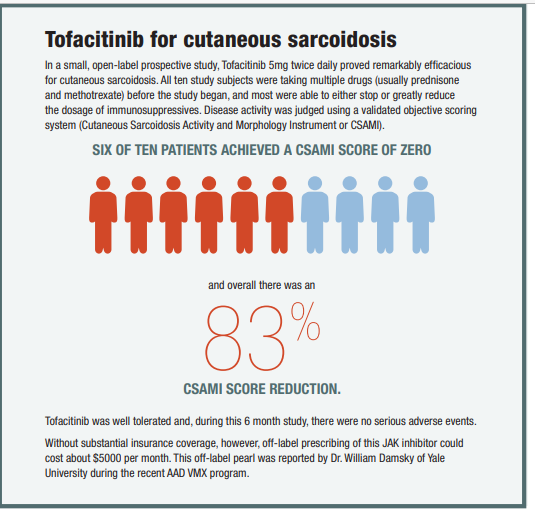By Ted Rosen, MD, FAAD, Editor-in-Chief
Literature Lessons

HIDRADENITIS SUPPURATIVA
A case of flaring HS during PREGNANCY was successfully managed using certolizumab pegol 400 mg SC every week. Certolizumab pegol does not cross the placental barrier, and is thus considered safe for use during pregnancy.
TO READ MORE: Wohlmuth-Wieser I, Alhusayen R. Treatment of hidradenitis suppurativa with certolizumab pegol during pregnancy. Int J Dermatol. 2021 Apr;60(4):e140-e141. doi: 10.1111/ijd.15286
(Editor’s note: There are several other literature reports of HS responding to certolizumab pegol.)
A Spanish study of 92 (mostly Hurley I and Hurley II) hidradenitis suppurativa patients indicated a high degree of satisfaction with the efficacy of TOPICAL 15% RESORCINOL. Local irritation was uncommon.
TO READ MORE: Docampo-Simón A, et al. Topical 15% resorcinol is associated with high treatment satisfaction in patients with mild to moderate hidradenitis suppurativa. Dermatology. 2021 Apr 22; doi: 10.1159/000515450.
GENERAL DERMATOLOGY
A small (N=10) prospective series from Italy showed that non-HIV-related KAPOSI SARCOMA responded to twice-daily application of â-blockers. Compounded 2% propranolol cream was somewhat superior to commercially available 0.5% ophthalmic timolol gel.
TO READ MORE: Giorgio CMR, et al. Comparison between propranolol 2% cream versus timolol 0.5% gel for the treatment of Kaposi sarcoma. Int J Dermatol. 2021;60:631-633.
(Editor’s note: More work needs to be done to identify the optimal â–blocker formulation and concentration for use in Kaposi sarcoma, but multiple case reports are promising.)

PEDIATRIC DERMATOLOGY

A large Danish cohort (60,497) of PREGNANCIES WITH EXPOSURE TO TOPICAL STEROIDS (including ultrapotent agents) was compared to a cohort (241,986) of unexposed pregnancies. In those with steroid exposure, there was no increased risk of small-for-gestational-age or low-birth-weight babies.
TO READ MORE: Andersson NW, et al. Evaluation of topical corticosteroid use in pregnancy and risk of newborns being small for gestational age and having low birth weight. JAMA Dermatol. 2021; May 5.
doi: 10.1001/jamadermatol.2021.1090
A systematic analysis of pediatric MYCOSIS FUNGOIDES (MF) in adolescents and children included 571 patients with a mean age at onset of 8.6 and mean age at diagnosis of 12.2. The hypopigmented variety was most predominant, followed by classic MF. Narrowband UV-B was the most frequently utilized therapeutic intervention. Just under 4% of patients died during the 30-year study; thus, the prognosis was generally excellent.
TO READ MORE: Jung JN, et al. Mycosis fungoides in children and adolescents: A systematic review. JAMA Dermatol. 2021;157(4):431-438.
doi:10.1001/jamadermatol.2021.0083
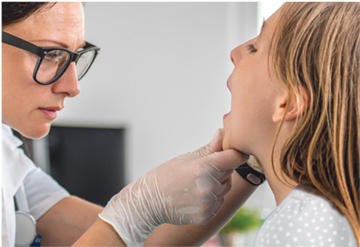
TO READ MORE ABOUT THIS SPANISH STUDY: Andina-Martinez D, et al. Mucocutaneous manifestations in hospitalized children with COVID-19. J Am Acd Dermatol. 2021, April 2.
MUCOCUTANEOUS MANIFESTATIONS related to COVID-19 infections are common among pediatric patients who are sick enough to be hospitalized. In addition to chilblain-like lesions, maculopapular exanthem, and conjunctival hyperemia, red cracked lips or strawberry tongue may be encountered. Children with the latter findings are likely to be older and sufficiently ill to be admitted to the pediatric ICU.
doi: 10.1016/j.jaad.2021.03.083
COVID-19
After receipt of their second BNT162B2 VACCINATION (Pfizer), a small number of health care workers developed both symptomatic and asymptomatic COVID-19 infection. The incidence was much lower among those who were fully vaccinated than among those who were not vaccinated and worked at the same health care facility. Studies cited are from Israel and the US.
TO READ MORE: Angel Y, et al. Association between vaccination with BNT162b2 and incidence of symptomatic and asymptomatic SARS-CoV-2 infections among health care workers. JAMA. 2021; May 6. doi:10.1001/jama.2021.7152; and Tang L, et al. Asymptomatic and symptomatic SARS-CoV-2 infections after BNT162b2 vaccination in a routinely screened workforce. JAMA. 2021; May 6.
doi:10.1001/jama.2021.6564.
(Editor’s note: Though there are hopeful signs regarding the pandemic, this is not a time to be complacent. Vaccinations are not foolproof, and COVID-19 infection—albeit less severe—can occur despite being fully vaccinated.)
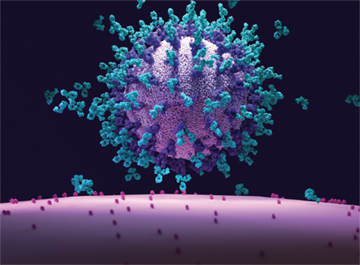
TO READ MORE: Elsanadi R, et al. Caring for skin during a pandemic: Acute facial skin changes following mask-wearing. AAD VMX; April 23-25, 2021 (virtual meeting).
A recent study involving the SERA collected from individuals who were 2 or 4 weeks after their second Pfizer COVID-19 vaccination showed neutralization capacity against a number of the newer COVID-19 viral variants, including several from India.
TO READ MORE: Liu, J., et al. BNT162b2-elicited neutralization of B.1.617 and other SARS-CoV-2 variants. Nature. 2021, June 10.

doi: 10.1038/s41586-021-03693-y
A small prospective study suggests that FACIAL SKIN wrinkle area and depth increased following 6 hours of continuous wearing of N95 masks. Routine paper masks did not show this effect.
A CLEVELAND CLINIC STUDY followed groups of individuals who were previously infected with COVID-19 and who were and were not subsequently vaccinated; individuals who had not been previously infected but were fully vaccinated; and finally a group of uninfected and unvaccinated individuals. The last group was the only one to show a steady increase in incident COVID-19 infection.
THE MESSAGE: individuals who have had SARS-CoV-2 infection are unlikely to benefit from COVID-19 vaccination, and vaccines can be safely prioritized to those who have not been previously infected before.
TO READ MORE: Shrestha NK, et al. Necessity of COVID-19 vaccination in previously infected individuals. MedRxiv 2021; June 5. doi: 10.1101/2021.06.01.21258176
CUTANEOUS ONCOLOGY, SURGERY AND LASERS
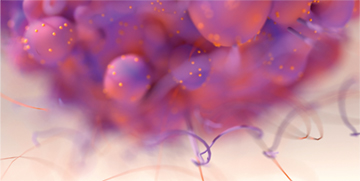
Males being treated for ADVANCED MELANOMA with immunotherapy are at risk for development of testosterone deficiency. Immunotherapy was defined as pembrolizumab, ipilimumab, nivolumab, and 2 experimental drugs (indoximod and SD-101).
TO READ MORE: Peters M, et al. Testosterone deficiency in men receiving immunotherapy for malignant melanoma. Oncotarget. 2021;12(3): 199-208.
Diffuse cutaneous metastases from BREAST CANCER can prove challenging to treat, and may include topical, intralesional or systemic chemotherapy, electrochemotherapy, photodynamic therapy, and radiotherapy. A new technique called intensity-modulated radiotherapy allows for application to large areas while sparing underlying internal organs.
TO READ MORE: Sittenfeld SMC, et al. Treatment of diffuse cutaneous metastases from breast cancer. Breast J. 2020;26(12): 2444-2446.
A retrospective, mul.ticenter chart review disclosed 879 patients in whom 888 HALO NEVI were diagnosed at or over age 18. Only 9 halo nevi were diagnosed within one year before a diagnosis of cutaneous melanoma. There were no melanomas found in incident halo nevi. The authors suggest annual skin exams in adults who develop halo nevi.
TO READ MORE:
Haynes D, et al. Asso.ciation between halo nevi and melanoma in adults: A multicenter retrospective case series. J Am Acad Dermatol. 2021;84(4):1164-1166.
Although rare, develop.ment of melanoma may accompany NEVUS OF OTA. The melanoma may be cutaneous, ocular, or CNS. Cutaneous mela.nomas present as new nodules; ocular melano.mas present with orbital pain and altered visual acuity; CNS melanomas present with headaches, neurologic deficits, or personality changes. Caucasian patients with nevus of Ota seem to be at higher risk for melano.ma development.
TO READ MORE: Williams NM, et al. Melanoma in the setting of nevus of Ota: a review for dermatologists. Int J Dermatol. 2021;60:523-32.
Using conservative estimates, investigators suggest that a complete ban on TANNING BED USE by Americans aged 14–17 would prevent some 15,000 malignant melanomas and be a cost-effective public health intervention.
TO READ MORE: Eskander A, et al. To ban or not to ban tanning bed use for minors: A cost-effectiveness analysis from multiple US perspectives for invasive melanoma. Cancer. 2021; April 12;
doi: 10.1002/cncr.33499
ACNE
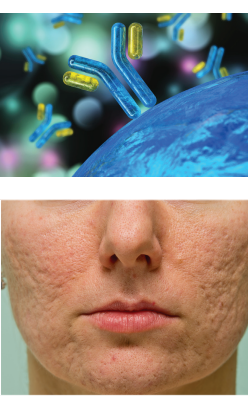
The author reviews recent literature linking acne to aberrations in the innate and adaptive IMMUNE SYSTEMS, including upregulation of the Th17 pathway, excessive activity of matrix metalloproteinases, and increased elaboration of IL1. These may offer new therapeutic pathways.
TO READ MORE: Salinas AB. Acne vulgaris: role of the immune system. Int J Dermatol. 2021 Jan 11. doi: 10.1111/ijd.15415
Post-hoc analysis of PHASE 3 STUDIES involving 3752 participants aged 9 years or older using clindamycin phosphate 1.2%/benzoyl peroxide 3.75% gel (Onexton), tretinoin 0.05% lotion (Altreno), and tazarotene 0.045% lotion (Arazlo) disclosed no meaningful difference in clinical response based upon patients’ BMI. Cook-Bolden FE, et al. Impact of body mass index (BMI) on efficacy of three topical
acne treatments in patients with moderate-to-severe acne. AAD VMX; April 23-25, 2021 (virtual meeting).
A systematic analysis of 99 prospective studies related to ACNE-SCAR TREATMENT suggested that subcision demonstrates the best mean improvement in acne scars, followed by chemical peels, and then ablative lasers. Cold microneedling was judged quite effective in the short term, but less so in the long run. Ibrahim SA, et al. Comparative effectiveness of acne scar treatments: A systematic review and network meta-analysis. AAD VMX; April 23-25, 2021 (virtual meeting).
COSMETIC DERMATOLOGY
73 Commercially available TATTOO INKS carefully examined by several methods of mass spectrometry demonstrated a high degree of mislabeling. Known problematic metals, such as nickel and chromium, were detected.
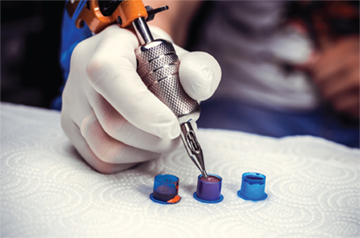
TO READ MORE: Wang X, et al. Analytical survey of tattoo inks – a chemical and legal perspective with focus on sensitizing substances. Contact Derm. 2021; June 5. doi: 10.1111/cod.13913
RHEUMATOLOGIC DISEASES
Although systemic steroids with or without hydroxychloroquine is the treatment of choice for ULCERATIVE SARCOIDOSIS, therapeutic failures or limiting side effects may preclude this method of management. A case report reminds us that use of TNF-alfa inhibitors, particularly infliximab, may lead to resolution of sarcoidosis – including the relatively rare ulcerative subtype.
TO READ MORE: Bukiej A, et al. Ulcerative cutaneous sarcoidosis successfully treated with infliximab. Clin Rheumatol. 2021 Mar 16. doi: 10.1007/s10067-021-05689-5. Online ahead of print.
DRUGS AND DEVICES
The authors report the largest case series of acute generalized EXANTHEMATOUS PUSTULOSIS (AGEP) accompanying hydroxychloroquine administration. All patients were female with a mean age of 47. The drug was given for a variety of indications. The AGEP was associated with pruritus and fever, but responded readily to drug withdrawal and topical potent corticosteroid application.
TO READ MORE: Chaabouni R, et al. Hydroxychloroquine-induced acute generalized exanthematous pustulosis: a series of seven patients and review of the literature. Int J Dermatol. 2021;60(6):742-748.
MOGAMULIZUMAB, a monoclonal antibody directed against CCR4, is used to treat mycosis fungoides and Sezary syndrome. This drug is associated with a heterogenous presentation of non-life threatening drug eruption with a variable and delayed onset. The drug rash needs to be carefully differentiated from relapse or progression of underlying CTCL in order to prevent unnecessary discontinuation.
TO READ MORE: Hirotsu KE, et al. Clinical Characterization of Mogamulizumab-Associated Rash During Treatment of Mycosis Fungoides or Sézary Syndrome. JAMA Dermatol. 2021;157(6):700-707
CLARITHROMYCIN has been described as a cause of fixed drug eruption.
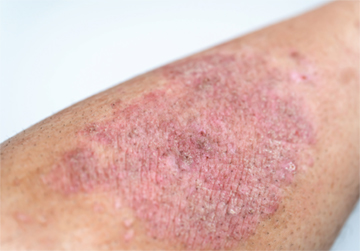
TO READ MORE: Asano A. Non-pigmenting and pigmenting fixed drug eruptions due to clarithromycin. Contact Derm. 2021. June 15; doi: 10.1111/cod.13914
INFECTIOUS DISEASES
A case series from India points out that palmar involvement during SCABIES infection can occur in adolescents and adults. Palmar lesions are not unique
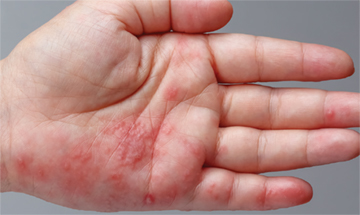
to children.
TO READ MORE: Koley S, et al. Scabies involving the palms in older children and adults: a changing scenario. Int J Dermatol. 2021; 60:605-610. doi: 10.1111/ijd.15383
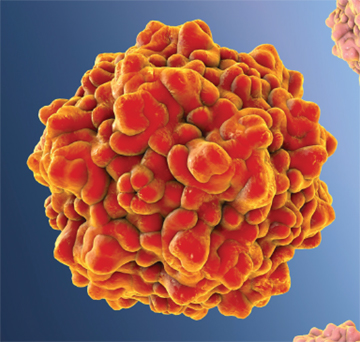
Edema and erythema of the hands (to the wrists) and feet (to the ankles), followed by petechiae and/or purpura may indicate PARVOVIRUS B19 infection. This is especially true in children and young adults, and is known as the papular-purpuric gloves and socks syndrome.
TO READ MORE AND SEE A NICE CLINICAL EXAMPLE: Bukvic BK and Blekic M. Papular-purpuric gloves and socks syndrome. Int J Dermatol. 2021;60:769-70.
SYPHILIS is the great imitator, as this case of sporotrichoid lues demonstrates.
TO READ MORE: Mazori DR, et al. Sporotrichoid secondary syphilis. Int J Dermatol. 2021;60(6):e241-e242. doi: 10.1111/ijd.15337.
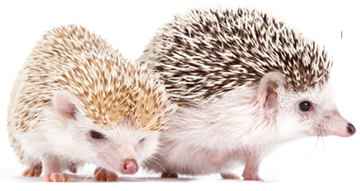
The African Pygmy Hedgehog is best known as a source of DERMATOPHYTOSIS in human owners. This case report reminds us that this exotic pet can be infected by and therefore ultimately infect
its human owner with non-tuberculous mycobacteria, in this case M. ulcerans.
TO READ MORE: Blume GR, et al. Non-tuberculous Mycobacterial Granulomatous Dermatitis in an African Pygmy Hedgehog(Atelerix albiventris). J Comp Pathol. 2021;182:22-26. .

